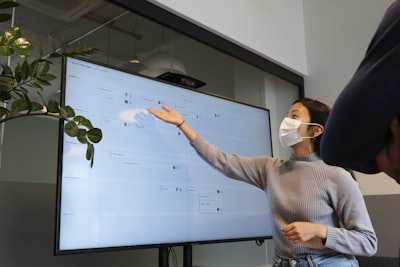How to Learn Anything in 4 Steps with the Feynman Technique
Curated from: getpocket.com
Ideas, facts & insights covering these topics:
4 ideas
·992 reads
24
Explore the World's Best Ideas
Join today and uncover 100+ curated journeys from 50+ topics. Unlock access to our mobile app with extensive features.
1. Pick a topic and study it
Start with a topic that you want to learn about — anything from a new language, to how to play an instrument, to physics. Break down the components of the topic and examine each piece individually. Once you understand the individual parts, put them back together and see how they fit. You can do this by using Feynman's mental models to build a solid foundation in your mind
37
317 reads
2. Explain the topic to a 5-year-old
Attempt to describe your chosen topic to a child. Feynman used this approach when he was learning to draw; he would describe the subject to a child or even use hand gestures until he could explain it enough that they understood.
35
272 reads
3. Examine any gaps in your knowledge
Were you able to explain the topic in basic terms? What was the most challenging part of doing that? How did you feel when things got tough? Were there any points when you used jargon, as opposed to actually explaining? If so, repeat steps one through three until you understand the topic better and have filled additional voids in your knowledge.
35
206 reads
4. Organize, analyze and simplify
Use what you learned in steps one through three to organize your learning into a system that works for you. Make the information even more understandable by removing jargon and replacing it with analogies or images. Additionally, make learning fun by creating an activity (a game, perhaps) around learning the topic from start to finish. For example, Feynman would often teach physics by presenting a series of questions on large sheets of paper joined in something like a flipbook. You can do this too: All you need is some time and effort
35
197 reads
IDEAS CURATED BY
CURATOR'S NOTE
Named after Nobel Prize-winning physicist Richard Feynman, the Feynman Technique involves breaking down information into small, manageable pieces and then using mental images to help understand it — and can be applied to convey complicated topics in a short amount of time.
“
Maaz Zulfiqar's ideas are part of this journey:
Learn more about personaldevelopment with this collection
How to build positive relationships with colleagues and superiors
How to navigate office politics without compromising your values
How to handle conflicts and difficult situations in the workplace
Related collections
Similar ideas
7 ideas
7 Unhelpful Habits Everyone Should Quit
getpocket.com
4 ideas
Why You Should Schedule Your Stress
getpocket.com
6 ideas
No More Cookies - Google's Privacy-Focused Web Standards
trajectorymatrix.substack.com
Read & Learn
20x Faster
without
deepstash
with
deepstash
with
deepstash
Personalized microlearning
—
100+ Learning Journeys
—
Access to 200,000+ ideas
—
Access to the mobile app
—
Unlimited idea saving
—
—
Unlimited history
—
—
Unlimited listening to ideas
—
—
Downloading & offline access
—
—
Supercharge your mind with one idea per day
Enter your email and spend 1 minute every day to learn something new.
I agree to receive email updates




